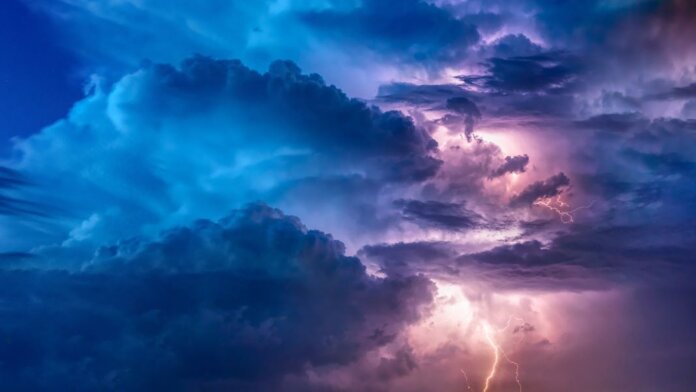Amid the search for solutions to global warming, various forms of geoengineering have gained traction. The more wild ideas—like spraying dust into space to block out some of the sun’s rays—are still being debated. But in the meantime, weather modification in the form of cloud seeding has been implemented in various parts of the world, most recently in the Western US.
Cloud seeding is most often done by releasing compounds like silver iodide into clouds. The chemicals function as a sort of scaffold that water molecules latch onto, becoming heavy enough to drop to the ground as rain. It’s not a new technology; countries around the world have used it for decades to generate rainfall for crops, and the US government even used it during the Vietnam War to increase rainfall during monsoon season and make the terrain muddy and difficult to traverse for enemy fighters.
But the need for cloud seeding is becoming more urgent and more widespread as temperatures rise, particularly in areas that were already traditionally hot and dry. One such area is the Southwest US; New Mexico and West Texas have never been known as lush or damp, so now that it’s getting hotter and there’s less rainfall, it’s not surprising that cloud seeding is coming in handy. More surprising is the technology’s use in nearby states that traditionally have been wetter, like Colorado, California, and Utah.
The Wall Street Journal reported last weekend that cloud seeding programs are currently underway in all of these states (as well as Nevada, Idaho, and Mexico), with spending on the technology reaching up to $12 million in one year.
The extra rainfall isn’t just for crops. With water levels in crucial reservoirs like Lake Mead and Lake Powell recently reaching historic lows, everything from residential water supply to hydropower generation could be under threat (though thanks to heavy snowfall in the Colorado Rockies this past winter, Lake Powell’s water level ricocheted back up this spring, rising more than 41 feet since the beginning of 2023).
Colorado’s St. Vrain water district spent $40,000 last year for winter cloud seeding to increase snowfall in the surrounding mountains. But one problem with cloud seeding is that it’s difficult to prove it works. Maybe there’s more rainfall after releasing silver iodide into the air above a given region—but how do we know there wouldn’t have been more rainfall regardless?
However, there’s plenty of evidence that points to real results. A study carried out in Idaho’s Payette Basin area in the winter of 2017 found that cloud seeding produced enough snow to fill 300 Olympic-size pools compared with clouds that weren’t seeded.
In 2021 the UAE’s National Center of Meteorology began seeding clouds near Dubai. Notably, they used a different technique: rather than releasing silver iodide or other chemicals into the air, they used drones with charge emitters, which zapped cloud molecules with an electric charge. Changing the balance of charges on tiny cloud droplets causes them to combine and form raindrops. In the wake of this activity, it rained so much that some streets in Dubai flooded—a rare occurrence for the dry desert city.
Advocates of cloud seeding say their data show the technology can increase rainfall by 15 percent, as compared to areas where clouds aren’t seeded. That adds up to around two extra inches of rain a year. It doesn’t sound like much, but particularly in very dry places, it’s enough to keep crops alive, and it contributes to shoring up underground aquifers.
In many parts of the US, we take water for granted. We turn on the tap, and out it flows, clean and abundant. But this may not be the case in the future; water is likely to become the new gold, and finding ways to get more of it will become crucial to our well-being and survival.
While cloud seeding is currently more viable than solutions like desalination, there’s a limit to how much we can manipulate the natural order before we end up with undesired knock-on effects. For now, pumping chemicals into clouds will tide us over well enough—but in time we’ll likely have to find a different way to make it rain, or abandon the driest areas altogether.
Image Credit: FelixMittermeier from Pixabay



